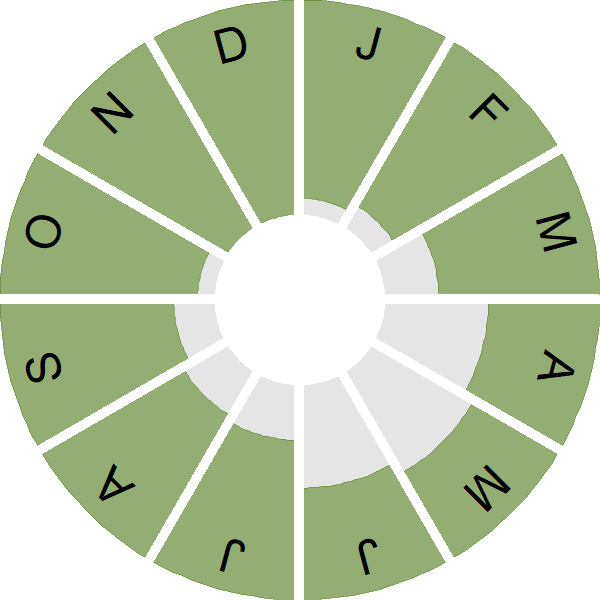Black-headed Gull
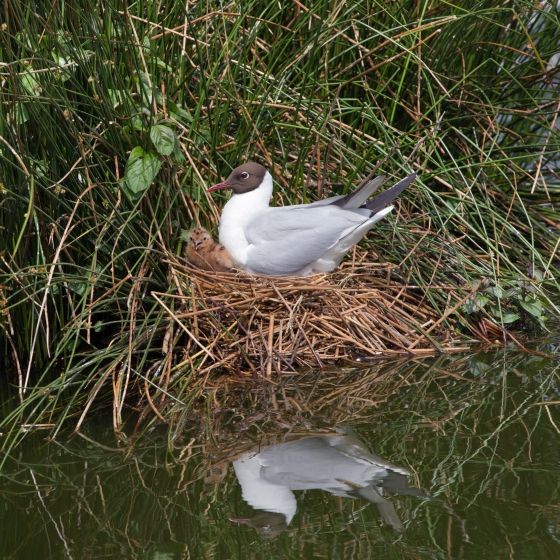
Introduction
Perhaps the most familiar of our gull species, even though not the most numerous, the Black-headed Gull breeds and winters across most of Britain & Ireland, absent only from upland areas.
The Black-headed Gull is a colonial breeder, nesting at a wide range of coastal and inland waterbodies, both natural and artificial. Colony sizes can vary from just a few pairs to many thousands, and are usually obvious.
A contraction in the wintering range of this species within both Britain and Ireland is apparent in atlas data, with losses in central Wales, and across much of Ireland and parts of Scotland.

Key Stats
Identification
ID Videos
This section features BTO training videos headlining this species, or featuring it as a potential confusion species.
Kittiwake & Other Small Gulls
Small Black-headed Gulls
Songs and Calls
Call:
Status and Trends
Conservation Status
Population Change
The UK population of Black-headed Gulls breeding at coastal colonies remained relatively stable between the 1969–70 Census and Seabird 2000 (1998–2002). However, the trend for inland breeding birds, which make up nearly half the population, is unknown as inland colonies were not surveyed fully prior to Seabird 2000. Annual data from the Seabird Monitoring Programme suggest that numbers have continued to be stable or may have increased slightly since Seabird 2000; results from the more comprehensive Seabirds Count (2015–2021) will confirm the recent trend when they are available (JNCC 2022).
Distribution
In winter, Black-headed Gulls have a near-ubiquitous distribution in lowland Britain & Ireland. In Britain the only significant gaps are in the Scottish and Welsh uplands, and the largest gaps in Ireland are in the northwest, between Antrim and Connemara. They nest in a wide range of coastal and inland, natural and man-made wetlands. Highest densities in Britain are in Orkney, northern England, East Anglia, the Thames Estuary, and the Solent, and in Ireland are more fragmented around Lough Neagh, Strangford Lough, and at several large wetland complexes scattered throughout the west and northwest.
Occupied 10-km squares in UK
or view it on Bird Atlas Mapstore.
or view it on Bird Atlas Mapstore.
European Distribution Map
Distribution Change
The breeding distribution change map can be divided roughly diagonally, with the north and west characterised by range losses contrasting with a predominance of range gains in the southeast.
Change in occupied 10-km squares in the UK
or view it on Bird Atlas Mapstore.
or view it on Bird Atlas Mapstore.
Seasonality
Black-headed Gulls are common and widespread, recorded throughout the year.
Weekly pattern of occurrence
The graph shows when the species is present in the UK, with taller bars indicating a higher likelihood of encountering the species in appropriate regions and habitats.

Habitats
Breeding season habitats
Relative frequency by habitat
The graph shows the habitats occupied in the breeding season, with the most utilised habitats shown at the top. Bars of similar size indicate the species is equally likely to be recorded in those habitats.
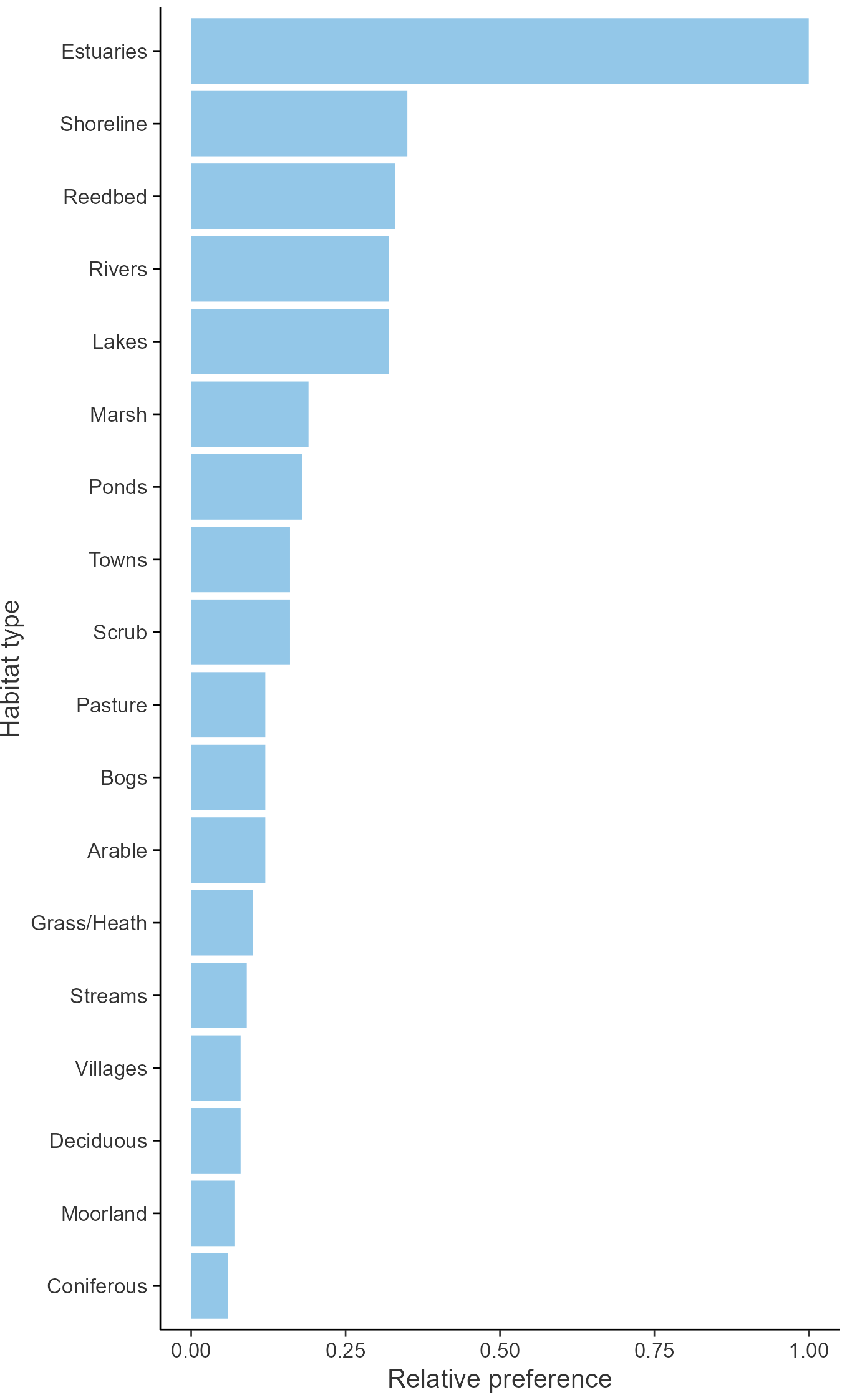
Movement
Britain & Ireland movement
Foreign locations of birds ringed or recovered in Britain & Ireland
Dots show the foreign destinations of birds ringed in Britain & Ireland, and the origins of birds ringed overseas that were subsequently recaptured, resighted or found dead in Britain & Ireland. Dot colours indicate the time of year that the species was present at the location.
- Winter (Nov-Feb)
- Spring (Mar-Apr)
- Summer (May-Jul)
- Autumn (Aug-Oct)

European movements
EuroBirdPortal uses birdwatcher's records, such as those logged in BirdTrack to map the flows of birds as they arrive and depart Europe. See maps for this species here.
The Eurasian-African Migration Atlas shows movements of individual birds ringed or recovered in Europe. See maps for this species here.
Biology
Productivity and Nesting
Nesting timing
Egg measurements
Clutch Size
Survival and Longevity
Survival is shown as the proportion of birds surviving from one year to the next and is derived from bird ringing data. It can also be used to estimate how long birds typically live.
View number ringed each year in the Online Ringing Report.
lifespan
Survival of adults
Survival of juveniles
Biometrics
Wing length and body weights are from live birds (source).
Wing length
Body weight
Ring Size
Classification, names and codes
Classification and Codes
- Order: Charadriiformes
- Family: Laridae
- Scientific name: Chroicocephalus ridibundus
- Authority: Linnaeus, 1766
- BTO 2-letter code: BH
- BTO 5-letter code: BLHGU
- Euring code number: 5820
Alternate species names
- Catalan: gavina riallera
- Czech: racek chechtavý
- Danish: Hættemåge
- Dutch: Kokmeeuw
- Estonian: naerukajakas
- Finnish: naurulokki
- French: Mouette rieuse
- Gaelic: Faoileag-a’-chinn-duibh
- German: Lachmöwe
- Hungarian: dankasirály
- Icelandic: Hettumáfur
- Irish: Sléibhín
- Italian: Gabbiano comune
- Latvian: lielais kiris
- Lithuanian: rudagalvis kiras
- Norwegian: Hettemåke
- Polish: (mewa) smieszka
- Portuguese: guincho
- Slovak: cajka smejivá
- Slovenian: recni galeb
- Spanish: Gaviota reidora
- Swedish: skrattmås
- Welsh: Gwylan Benddu
- English folkname(s): Petch
Research
Causes of Change and Solutions
Causes of change
Black-headed Gull productivity has fluctuated and may have been affected by predation from American Mink Neovison vison (Craik 1997), although it is unclear whether this may have driven population trends.
Publications (5)
The status of the UK’s breeding seabirds
Author: Stanbury, A.J., Burns, F., Aebischer, N.J., Baker, H., Balmer, D., Brown, A.F., Dunn, T., Lindley, P., Murphy, M., Noble, D.G., Owens, R. & Quinn, L.
Published: 2024
Five seabird species are added to the Birds of Conservation Concern Red List in this addendum to the 2021 update, bringing the total number of Red-listed seabird species to 10, up from six since seabirds were last assessed. The Amber List of seabirds moves from 19 to 14 species, and the Green List increases from one to two species.
29.09.24
Papers
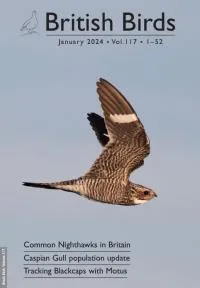
Seabird Population Trends and Causes of Change: 1986–2023
Author: Harris, S.J., Baker, H., Balmer, D.E., Bolton, M., Burton, N.H.K., Caulfield, E., Clarke, J.A.E., Dunn, T.E., Evans, T.J., Hereward, H.R.F., Humphreys, E.M., Money, S. and O’Hanlon, N.J.
Published: 2024
This report presents the latest seabird population trends in breeding abundance and productivity using data from the Seabird Monitoring Programme (SMP).The report documents changes in the abundance and productivity of breeding seabird species in Britain and Ireland from 1986 to 2023, and provides a detailed account of the 2021, 2022 and 2023 breeding seasons.This report includes both inland and coastal populations and trends from the Channel Islands, England, Isle of Man, Northern Ireland, Scotland, Wales and the Republic of Ireland, which are presented where sufficient data are available. The results from this report are used more broadly to assess the health of the wider environment, to inform policy and for conservation action.
21.11.24
Reports Research reports
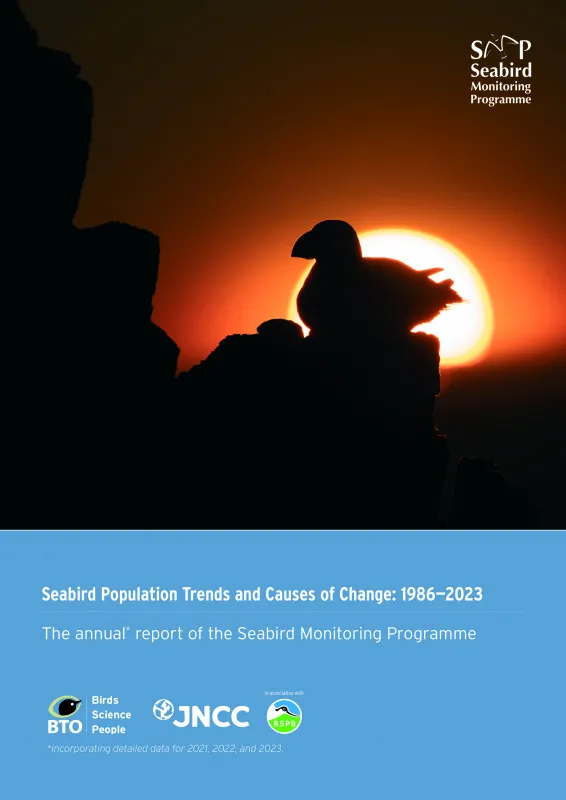
Impacts of highly pathogenic avian influenza on seabird populations in the North Sea are detectable in sea-watchers’ migration counts
Author: Macgregor, C.J., Gillings, S., Balmer, D.E., Boersch-Supan, P.H., Harris, S.J., Hereward, H.F.R., Humphreys, E.M., Pearce-Higgins, J.W., Taylor, R.C., Troost, G. & Atkinson, P.W.
Published: 2024
BTO research reveals that seabird population declines due to Highly Pathogenic Avian Influenza (HPAI) can be detected using data collected by volunteer seawatchers.
28.12.24
Papers
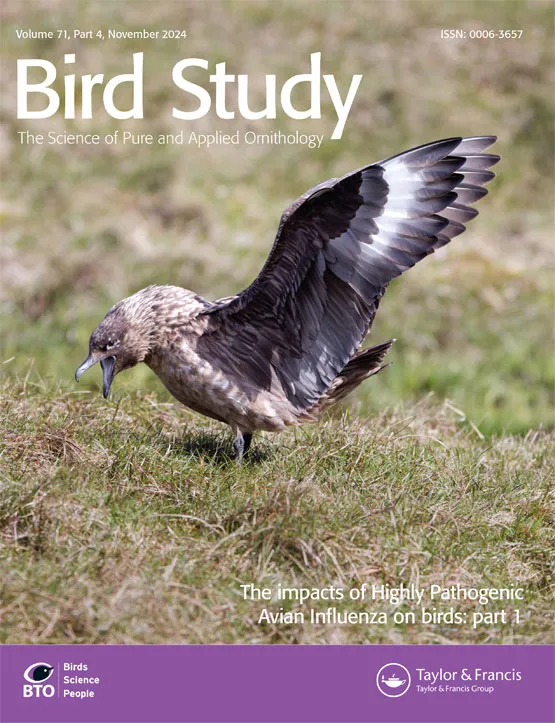
Northern Ireland Seabird Report 2023
Author: Booth, K.J. & El Haddad, H.
Published: 2024
The report includes detailed information about the population trends and breeding success of seabirds in Northern Ireland, over the 2023 breeding season. Notably, Fulmar and Kittiwake populations are reported to be experiencing continued declines, while Guillemot, Common Gull and Herring Gull populations show increases at most breeding sites.
15.04.24
Reports Northern Ireland Seabird Report

Birds of Conservation Concern Wales 4: the population status of birds in Wales
Author: Johnstone, I.G., Hughes, J., Balmer, D.E., Brenchley, A., Facey, R.J., Lindley, P.J., Noble, D.G. & Taylor, R.C.
Published: 2022
The latest review of the conservation status of birds in Wales. The report assessed all 220 bird species which regularly occur in Wales. There are now 60 species of bird on the Red List, with 91 on the Amber List and just 69 - less than a third of the total number of species - on the Green List.
06.12.22
Reports Birds of Conservation Concern


